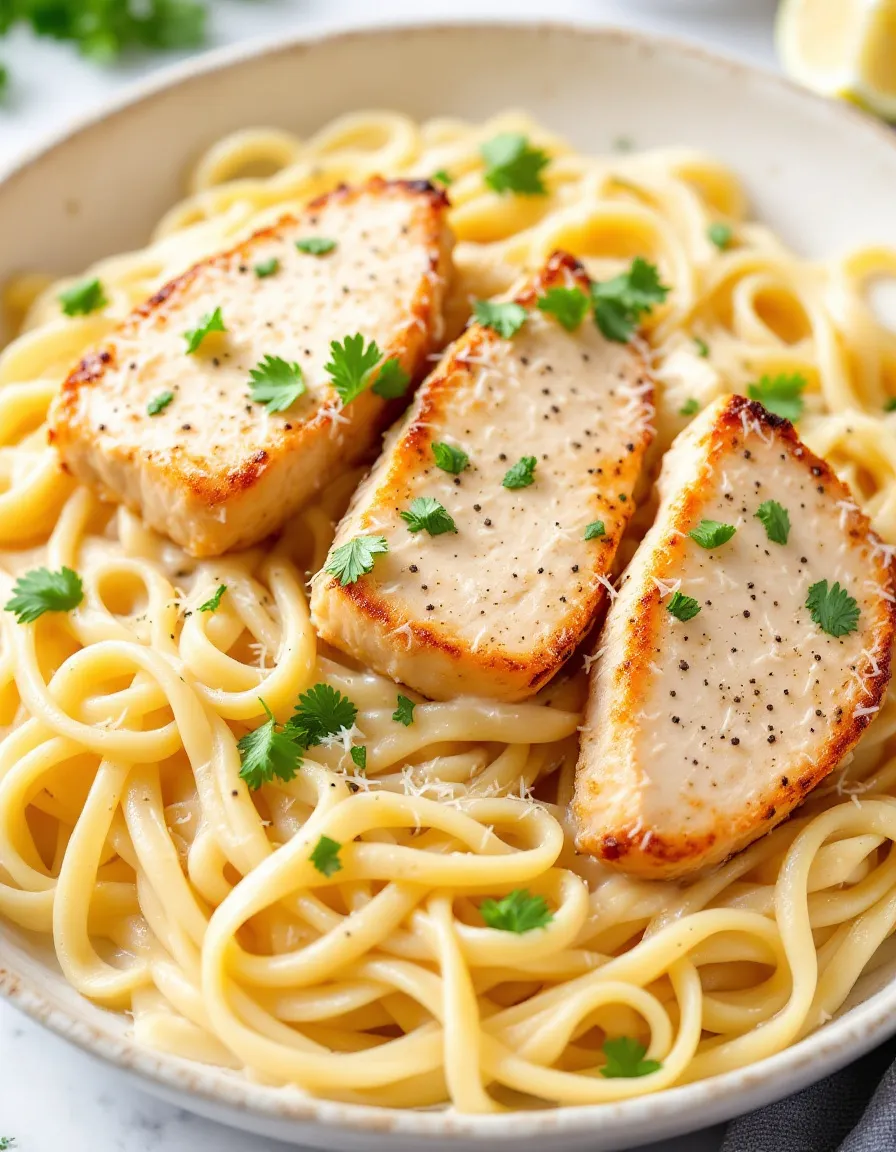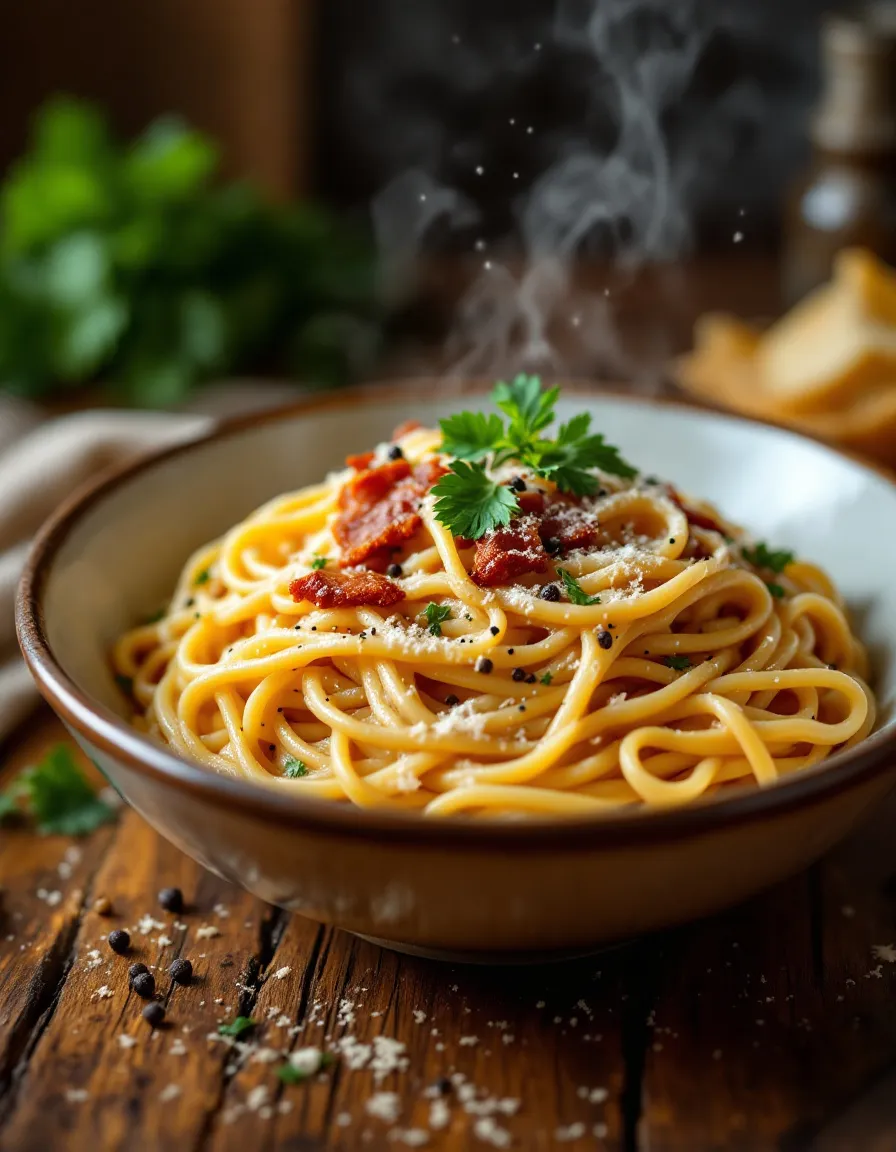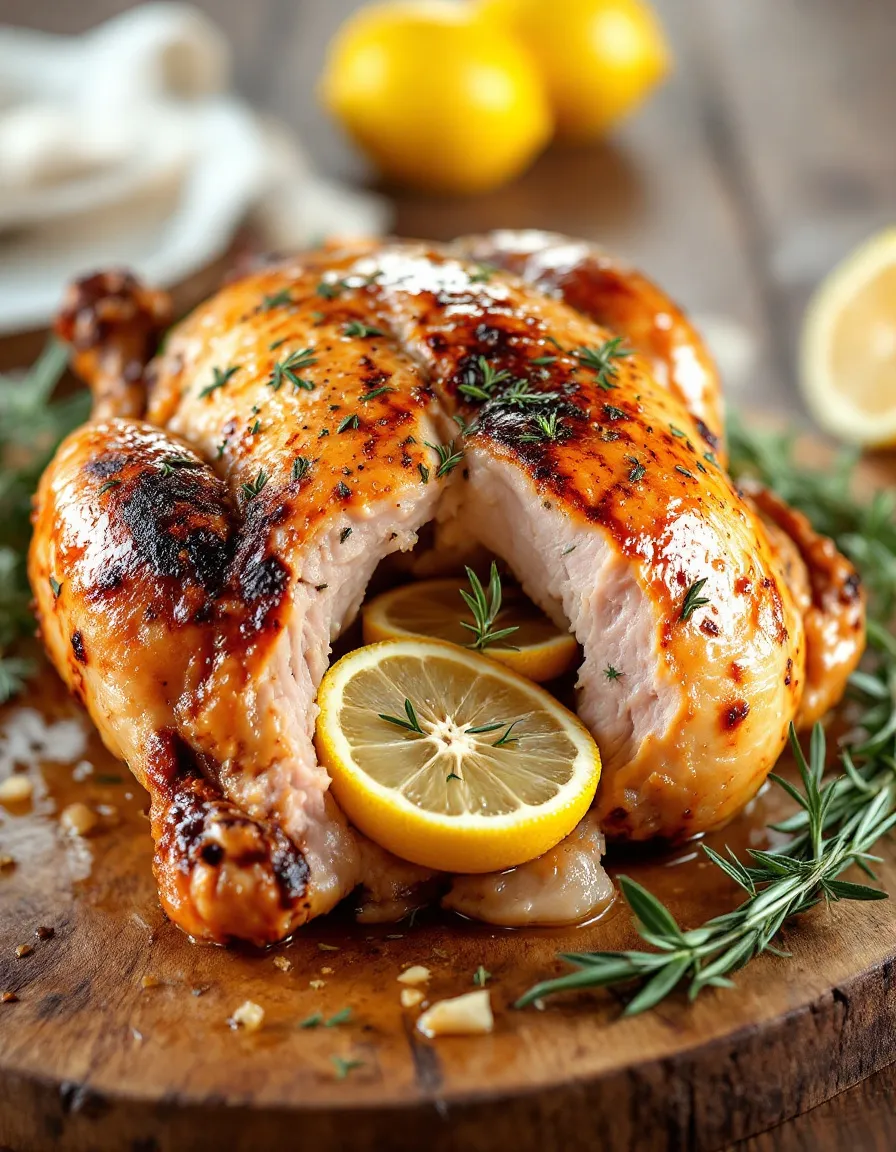Delicious Chocolate Chip Cookies: A Classic Recipe for Every Occasion
Chocolate chip cookies are the quintessential treat that brings joy to both young and old. The aroma of freshly baked cookies wafting through your home is something truly special. With a perfect blend of rich chocolate, soft dough, and just a hint of vanilla, this recipe offers everything you crave in a sweet snack. Whether you are hosting friends, surprising your loved ones, or simply satisfying a late-night craving, these warm cookies guarantee happiness in every bite.
The beauty of chocolate chip cookies lies in their versatility; they can be enjoyed plain or dressed up with nuts or dried fruits. Each bite is a delightful balance of textures: the slightly crisp edges contrast beautifully with the soft, chewy center. As they cool, the chocolate chips become gooey, ensuring that every mouthful is both satisfying and indulgent. By making these cookies at home, you not only get to control the ingredients but also create a personal connection with a beloved classic that can be shared for generations.
Quick Recipe Highlights
- Flavor Profile: The combination of sweet chocolate and buttery dough creates a delightful, melt-in-your-mouth experience that is both nostalgic and satisfying.
- Texture: Expect a contrast of crispy edges and a chewy center, with pockets of gooey chocolate that enhance every bite.
- Aroma: The sweet, buttery scent of cookies baking will fill your kitchen, evoking warmth and comfort.
- Visual Appeal: Golden brown cookies speckled with dark chocolate chips are not only delicious but also visually enticing.
- Skill Level Needed: This recipe is beginner-friendly, perfect for those who are new to baking or seeking a quick and easy treat.
- Special Equipment: All you need are basic kitchen tools, including a mixing bowl, baking sheet, and an oven.
Recipe Overview
- Difficulty Level: With just simple measurements and mixing required, this cookie recipe is perfect for novice bakers.
- Category: Cookie recipes fall under desserts or snacks, making them a perfect fit for any occasion.
- Cuisine: Chocolate chip cookies are an iconic American treat, originally crafted by Ruth Wakefield in the 1930s, reflecting the rich history of home baking.
- Cost: The ingredients for this recipe are affordable and can be found in most pantry staples, making it cost-effective for families and individuals.
- Season: Cookies can be enjoyed year-round, but they’re especially popular during holidays when baking and sharing treats is in full swing.
- Occasion: Perfect for school lunches, birthday parties, or cozy family evenings, these cookies are versatile enough for any gathering.
Why You’ll Love This Recipe
The combination of rich chocolate and buttery dough in chocolate chip cookies creates an unforgettable taste experience that feels both indulgent and homely. The aroma that fills your kitchen will invite everyone in, transforming your home into a cozy haven. There’s nothing more satisfying than pulling a tray of warm cookies from the oven; the anticipation is part of the magic. These cookies, with their melt-in-your-mouth texture and delicious buttery flavor, deliver that classic comfort food satisfaction. Plus, the simple joy of biting into a warm chocolate chip cookie can evoke fond memories of childhood, family gatherings, and sweet moments shared with loved ones.
In terms of convenience, this recipe is straightforward and quick to prepare, making it ideal for busy individuals or families. The total time of just 25 minutes includes prep and baking, meaning you can enjoy a fresh batch of cookies with minimal effort. The ease of assembly allows you to whip up cookie dough even on a weeknight after dinner, allowing for spontaneous treats that brighten up your day. Simply mix the ingredients, scoop, and bake; the process is virtually foolproof, leaving no room for kitchen disasters.
Nutritionally, while chocolate chip cookies are a treat, they still can be enjoyed in moderation. Using high-quality chocolate chips can enhance the nutritional value, bringing antioxidants and flavor to your cookies. You can also incorporate whole grain flour or reduce sugar by experimenting with alternative sweeteners, making them a bit healthier while still satisfying your sweet tooth.
Socially, there’s something inherently joyful about sharing homemade cookies. Whether you’re hosting a gathering or just leaving a plate for neighbors or friends, there’s a sense of community built around these sweet treats. Baking becomes a way of showing love and care, and these cookies can be the star of any dessert spread. Everyone loves a classic chocolate chip cookie, making them perfect for all occasions.
Lastly, the cost-effectiveness of this recipe makes it accessible to everyone. With simple ingredients and minimal kitchen equipment required, you can bake a full batch of cookies without breaking the bank. The satisfaction of creating something delicious in your own kitchen also adds to the experience, offering both value and enjoyment.
Historical Background and Cultural Significance
The origin of chocolate chip cookies is a heartwarming tale of innovation courtesy of Ruth Wakefield in the 1930s. She created the first chocolate chip cookie at the Toll House Inn in Massachusetts. When she decided to add chopped-up bits of a Nestlé chocolate bar into her cookie dough, little did she know that she was about to spark a nationwide sensation that would change dessert history. The recipe was so well-loved that it was published in a Boston newspaper, leading to a rising trend in cookie baking.
Culturally, chocolate chip cookies have transcended generations, becoming a symbol of American home baking. They embody the spirit of warmth and hospitality that many find inherently inviting. This beloved treat often appears during celebrations and gatherings, symbolizing community and shared joy. They have since evolved into various flavors and adaptations, incorporating everything from nuts to different types of chocolate, thus enriching their significance in contemporary culture.
The evolution of the chocolate chip cookie has also led to countless variations that cater to diverse palates. From the introduction of gluten-free options to unique flavor profiles like salted caramel and matcha, these cookies continue to adapt to the culinary demands of society. Each version pays homage to the original recipe while inviting creativity and innovation.
Regional variations of the chocolate chip cookie—such as the addition of local flavors or ingredients—reflect the unique cultural nuances of different communities. For example, in some areas, bakers might incorporate nuts or various spices, resulting in delicious regional adaptations that still hold true to the foundational recipe while embracing local tastes.
Ingredient Deep Dive
Flour: Flour serves as the foundation for any cookie, as it provides structure and contributes to the texture. Generally, all-purpose flour is used in this recipe. When choosing flour, look for high-quality brands that are freshly milled for optimal taste and performance. Store in an airtight container in a cool, dry place to maintain freshness. For those avoiding gluten, substitutes like almond or oat flour can be used, but they may alter the cookie outcome slightly.
Butter: The use of butter in chocolate chip cookies contributes to the richness and flavor. It also impacts texture; room temperature butter allows for better creaming with sugar, creating a light and fluffy dough. When selecting butter, opt for unsalted to control the overall salt content. Proper storage in the refrigerator can keep butter fresh for a longer period, and freezing is an option for extended storage. For dairy-free alternatives, coconut oil or vegan butter can be suitable substitutes.
Sugar: Sugar not only sweetens but also aids in browning and creating the perfect chewy texture. A balance of granulated sugar and brown sugar often yields the best results. When choosing sugar, look for unrefined or organic varieties for additional flavor depth. Store sugar in a cool flour container away from moisture. If you wish to lower the sugar content, consider natural alternatives like honey or maple syrup, though baking times may need adjustments.
Chocolate Chips: The star ingredient of this recipe, chocolate chips, come in various types, including semi-sweet, dark, or even milk chocolate. When selecting chocolate, choose high-quality brands that contain cacao as the first ingredient for the best flavor. Proper storage of chocolate is crucial; keep it cool and dry to prevent melting and maintaining the best quality. For a twist, consider mixing in white chocolate or butterscotch chips for additional flavor profiles.
Common Mistakes to Avoid
- Using cold butter: Cold butter doesn’t cream well, leading to dense cookies. Always use room-temperature butter for optimal fluffiness.
- Overmixing the dough: Overmixing can lead to tough cookies. Mix just until the ingredients are combined to ensure a tender texture.
- Skipping the chilling step: Chilling the dough solidifies the fat, preventing spreading, leading to thicker, chewier cookies.
- Not measuring flour correctly: Flour should be spooned into the measuring cup and leveled off to prevent dense, dry cookies.
- Underbaking: Cookies continue to cook once removed from the oven. Pull them out when the edges are golden but the centers look slightly underbaked.
- Using expired ingredients: Always check the freshness of your baking powder, baking soda, and even the chocolate chips to ensure the best flavor.
- Baking on ungreased sheets: Even if the pans are non-stick, greasing or using parchment paper prevents sticking and ensures even baking.
- Ignoring oven temperature: An inaccurate oven can lead to over or undercooked cookies. Always preheat and consider using an oven thermometer for accuracy.
- Not letting the cookies cool: Letting cookies cool on the baking sheet for a few minutes balances moisture and texture, ensuring they don’t break apart.
- Forgetting to rotate baking sheets: Uneven heat can cause cookies to bake unevenly; rotating the sheets halfway ensures consistent results.
Essential Techniques
Measuring Ingredients: Accurate measuring of ingredients is vital for successful baking. For flour, use the spoon and level method, whereas for liquids, a clear measuring cup provides visual accuracy. Measuring accurately helps maintain the cookie’s intended texture and flavor, so invest time in this essential technique.
Creaming Butter and Sugar: This technique aerates the mixture, creating a light and fluffy base for your cookies. Beat the butter and sugar until pale and fluffy, using an electric mixer for efficiency. Watch for visual cues like a light color change and fluffiness. Proper creaming can be the difference between a dense and delightful cookie.
Chilling the Dough: Allowing the dough to chill is crucial for flavor development and texture. It solidifies the fat in the dough, preventing excessive spreading and resulting in thicker cookies. Chilling for at least 30 minutes ensures a more structured cookie with enhanced flavor.
Cookie Scooping Techniques: Using a cookie scoop for even portions ensures uniform baking and proper rising. Invest in different sizes of scoops to create cookies of various sizes. When placing dough on sheets, maintain distance to allow for spreading during baking.
Pro Tips for Perfect Chocolate Chip Cookies
1. Always use high-quality ingredients; they significantly affect taste and texture results. Opt for good butter and chocolate for the best outcome.
2. Experiment with adding a pinch of sea salt to enhance the chocolate flavor and add depth.
3. Try chilling the dough overnight; this allows for deeper flavor development and better texture.
4. For crispy cookies, bake slightly longer; for softer cookies, remove when they appear underbaked.
5. Always preheat your oven fully before baking; starting with a hot oven is key to achieving the right texture.
6. Rotate your baking sheets halfway through baking to ensure even baking.
7. When adding nuts or additional chocolate, ensure an even distribution within the dough for balanced bites.
8. Allow the cookies to cool fully on a wire rack to achieve the desired firmness without becoming soggy.
Variations and Adaptations
Incorporate ingredients like nuts, dried fruits, or various chocolates for added flavor and texture. Adding walnuts gives a nice crunch, while dried cranberries can provide a sweet-tart balance. For a seasonal twist, try adding pumpkin spice during the fall for a festive cookie alternative.
Seasonal adaptations can take advantage of winter flavors, such as peppermint chips around the holidays, while chocolate-orange combinations can refresh your summer baking. Opting for dairy-free versions is simple; substitute butter with coconut oil and use dairy-free chocolate chips for a delicious treat that accommodates dietary restrictions.
Flavor variations can range from espresso or peanut butter chips to coconut flakes, diversifying the cookie experience. If limb texture is desired, incorporating oats can provide a chewy element, adding to the cookie’s heartiness.
If presenting, consider forming the dough into bars or using mini muffin tins for a unique touch. Presentation can be elevated with a simple dusting of powdered sugar or a drizzle of chocolate on top before serving.
Serving and Presentation Guide
Plating chocolate chip cookies can be as simple as stacking them on a decorative plate or creating a cookie tower for gatherings. Garnish with sprigs of mint for a splash of color or sprinkle with flaky sea salt for added visual interest.
Consider serving warm cookies with a scoop of vanilla ice cream for an indulgent dessert. Alternatively, present them with a cup of freshly brewed coffee or tea for a cozy afternoon treat.
As for portion control, consider cutting cookies into smaller sizes for kid-friendly servings or serving alongside fruits for a balanced snack plate. Temperature-wise, cookies can be enjoyed warm right out of the oven or at room temperature, allowing for flexibility in serving.
Wine and Beverage Pairing
When pairing wine with chocolate chip cookies, a glass of dessert wine like Pedro Ximénez can enhance the sweetness of the cookie while complementing the rich chocolate. For a daring match, a stout beer can enrich the chocolate notes found within the cookie.
If you prefer non-alcoholic beverages, pair these cookies with milk or a creamy chai latte, ensuring a comforting complement to the sweetness. Also, pairing with coffee is a classic choice; the bitterness enhances the sweetness of the cookies, creating a satisfying flavor balance.
For tea lovers, a cup of black or herbal tea can be refreshing, offering a different kind of warmth last note with the sweetness of cookies.
Storage and Shelf Life
Proper storage is key to maintaining the freshness of your chocolate chip cookies. Store them in an airtight container at room temperature for up to one week. To maintain texture, consider placing a slice of bread in the container with the cookies to absorb moisture.
If freezing is necessary, allow the cookies to cool completely before placing them in a freezer-safe zipper bag. For best results, use parchment paper to separate layers of cookies to prevent sticking. The cookies can be frozen for up to three months, making them perfect for long-term storage.
For reheating, place frozen cookies in a preheated oven at 350°F for about 5-7 minutes until warm. This will revive the original texture and flavor profile of freshly baked cookies.
Make Ahead Strategies
To save time, consider preparing the cookie dough in advance. After mixing all the ingredients, scoop the dough into balls and freeze them individually on a baking sheet. Once frozen, transfer them to a freezer bag for easy access later on. This allows you to bake just the amount you need when the craving hits!
If you prefer a more structured approach, prepare the dough and refrigerate it. When ready to bake, simply scoop, shape, and bake directly from the fridge.
It’s important to note that chilling the dough also enhances the flavor and texture, so allowing the dough to sit overnight can have great benefits.
For added freshness, experiment with adding a touch of vanilla or almond extract just before baking if preparing ahead.
Scaling Instructions
Scaling your chocolate chip cookie recipe can be an easy way to cater to larger crowds or smaller gatherings. To halve the recipe, simply divide each ingredient by two, keeping the ratio intact for flavor. For doubling or tripling, ensure you have mixing bowls large enough to accommodate the larger quantities.
Adjust cooking times slightly when increasing the batch size, as larger quantities may require more time in the oven. Always check for doneness visually, looking for the classic golden edges.
When scaling, consider the baking sheets’ capacity. If you do not have a large enough space, bake multiple batches instead. You can store any excess dough in the refrigerator or freezer.
Nutritional Deep Dive
Each chocolate chip cookie contains a balance of macronutrients, with carbohydrates from the flour, fats from the butter, and proteins from the eggs. Understanding the macro breakdown can help track your dietary intake, particularly if you are conscious of portion sizes.
Micronutritionally, cookies provide minimal vitamins, but they can be enhanced with added ingredients like nuts, which supply healthy fats and additional fiber.
For those focused on health, incorporating whole grain flour or reducing sugar can make a significant difference in calorie count while still delivering delightful flavors.
Pay attention to portion sizes, as it’s easy to indulge in multiple cookies, leading to increased calorie consumption. Consider baking smaller, bite-sized cookies to make calorie management easier while still enjoying treats.
Dietary Adaptations
For gluten-free baking, substitute regular flour with a gluten-free flour blend, ensuring to check for a suitable consistency.
For those who are dairy-free, use plant-based butter and chocolate to maintain flavor without sacrificing texture. A vegan version can easily be made by switching out eggs for a flaxseed mixture or substituting with applesauce.
Low-carb or keto dieters can try almond flour replacements as a base, adjusting other ingredients accordingly for sweetness. This adaptation still allows for satisfying chocolate chip cookies without traditional carbs.
For low-FODMAP diets, also ensure the chocolate you choose is certified low-FODMAP and consider reducing the butter for better digestion.
Troubleshooting Guide
If you find your cookies are too flat, try chilling the dough longer or increasing the flour ratio slightly.
If cookies are tough, reduce the mixing time once wet and dry ingredients combine. You can also ensure you’re not overbaking; they should come out slightly soft in the middle to stay chewy.
Flavor balance can be adjusted by adding a pinch of salt, ensuring all sweet flavors stand out without being overwhelmingly sweet.
If using substitutions, maintain ratios where possible; too much variation can lead to altered texture and taste.
For burnt bottoms, consider using parchment paper or silicone baking mats to provide even heat distribution.
Watch for proper ingredient temperatures; these can greatly affect how the dough interacts and integrates during baking.
Recipe Success Stories
Feedback from the community continually highlights the delight that this chocolate chip cookie recipe brings to gatherings. Many have shared personal twists, such as adding sea salt flakes on top for enhanced flavor or incorporating family secret ingredients for a memorable touch.
Others have found success in adapting the recipe for special diets, documenting their journey of transforming the classic cookie into gluten-free or vegan versions while maintaining the intended essence of the treat.
When using this recipe for school bake sales or family events, it’s traveled well, often disappearing within minutes due to enthusiastic taste testers.
Story after story affirms the nostalgic connection these cookies bring, reminding many of their childhood baking experiences.
Photography enthusiasts frequently share beautiful shots of their cookies, encouraging others to share their achievements and present their interpretations of this timeless recipe.
Frequently Asked Questions
2. What is the best way to store baked chocolate chip cookies? Keep your cookies in an airtight container at room temperature for up to a week. Adding a slice of bread can help retain moisture and prevent them from becoming too dry.
3. Why are my chocolate chip cookies flat? Flat cookies can result from using melted butter, not enough flour, or over-mixing the batter. Ensure your butter is softened and not melted, measure flour correctly, and mix the dough just until combined.
4. Can I use brown sugar instead of white sugar? Yes, brown sugar will make your cookies chewier and add a slight molasses flavor. Using a combination of both can provide the best taste and texture.
5. What can I substitute for eggs in this recipe? You can replace each egg with 1/4 cup of unsweetened applesauce, a mashed banana, or a flaxseed meal mixed with water (1 tablespoon flaxseed meal with 2.5 tablespoons water, let sit for 5 minutes).
6. Can I make these cookies without chocolate chips? Absolutely! Consider replacing chocolate chips with dried fruits, nuts, or coconut flakes for a different flavor profile.
7. How can I get thicker cookies? For thicker cookies, chill the dough for at least an hour before baking, and try using a higher proportion of brown sugar and including a bit more flour.
8. What’s the ideal baking temperature for chocolate chip cookies? The ideal temperature is usually around 350°F (175°C), providing even baking and optimal browning.
9. Are there vegan options for this recipe? Yes, substituting butter with vegan butter and using non-dairy chocolate chips will keep the flavor profile intact while accommodating a vegan lifestyle.
10. How do I prevent cookies from burning on the bottom? Use parchment paper or a silicone mat on your baking sheets for even baking and to prevent direct contact with the baking surface, which can get too hot.
11. Should I let my cookies cool before eating? Let cookies cool on the baking sheet for a few minutes to prevent them from breaking apart. They will firm up as they cool, providing the perfect texture.
12. Is it possible to make cookie bars instead of individual cookies? Yes, simply spread the dough into a greased baking pan and bake until golden brown. Once cooled, cut into squares for easy serving.
Additional Resources
For those wanting to explore more cookie recipes, consider trying oatmeal raisin cookies or peanut butter cookies for variety. Understanding the baking techniques, like proper ingredient measuring or dough chilling, can elevate your baking skill and deliciousness.
Explore ingredient information to learn more about substitutions, storage tips, or variations that lend their flair to traditional recipes. It’s helpful to follow guides on kitchen equipment, ensuring you have everything you need for successful baking.
Also, consider seasonal variations that incorporate festive flavors, such as pumpkin spice for autumn or peppermint for the winter holidays, to keep things exciting in the kitchen.
Join the Conversation
We invite you to share your baking experiences on social media with us! Share photos of your chocolate chip cookies and tag us to inspire others. Your feedback not only enriches the community but also celebrates the diversity of baking experiences.
Join recipe review sessions and provide tips based on your own trials and errors; this is where the cooking community thrives and learns together. Discussing your variations or secret ingredients can motivate others to experiment and innovate in their baking endeavors.
Invite friends and family to enjoy these cherished cookies together, creating vibrant memories around the kitchen, as shared cooking experiences have a unique ability to strengthen bonds.
The Recipe
Chocolate Chip Cookies
Serves: 24 cookies
Prep Time: 15 mins
Cook Time: 10 mins
Total Time: 25 mins
Kitchen Equipment Needed
- Mixing bowl
- Electric mixer (optional)
- Baking sheet
- Parchment paper or silicone mat (optional)
- Measuring cups and spoons
- Cookie scoop or spoon
Ingredients
- 1 cup unsalted butter, softened
- 3/4 cup granulated sugar
- 3/4 cup brown sugar, packed
- 1 teaspoon vanilla extract
- 2 large eggs
- 2 1/4 cups all-purpose flour
- 1 teaspoon baking soda
- 1/2 teaspoon salt
- 2 cups semi-sweet chocolate chips
Directions
- Preheat your oven to 350°F (175°C).
- In a mixing bowl, cream together the softened butter, granulated sugar, brown sugar, and vanilla extract until light and fluffy.
- Add in the eggs one at a time, mixing well after each addition.
- In a separate bowl, combine the flour, baking soda, and salt. Gradually add this dry mixture to the wet ingredients, mixing until just combined.
- Fold in the chocolate chips until evenly distributed throughout the dough.
- Using a cookie scoop or spoon, drop rounded tablespoonfuls of dough onto a baking sheet lined with parchment paper, spacing them about 2 inches apart.
- Bake in the preheated oven for 9-11 minutes, or until the edges are golden and the centers look slightly underbaked.
- Allow cookies to cool on the baking sheet for a few minutes before transferring them to a wire rack to cool completely.
Recipe Notes
- For chewier cookies, chill the dough for at least 30 minutes before baking.
- Feel free to add nuts, such as pecans or walnuts, for extra texture.
- Store leftover cookies in an airtight container for up to a week.






